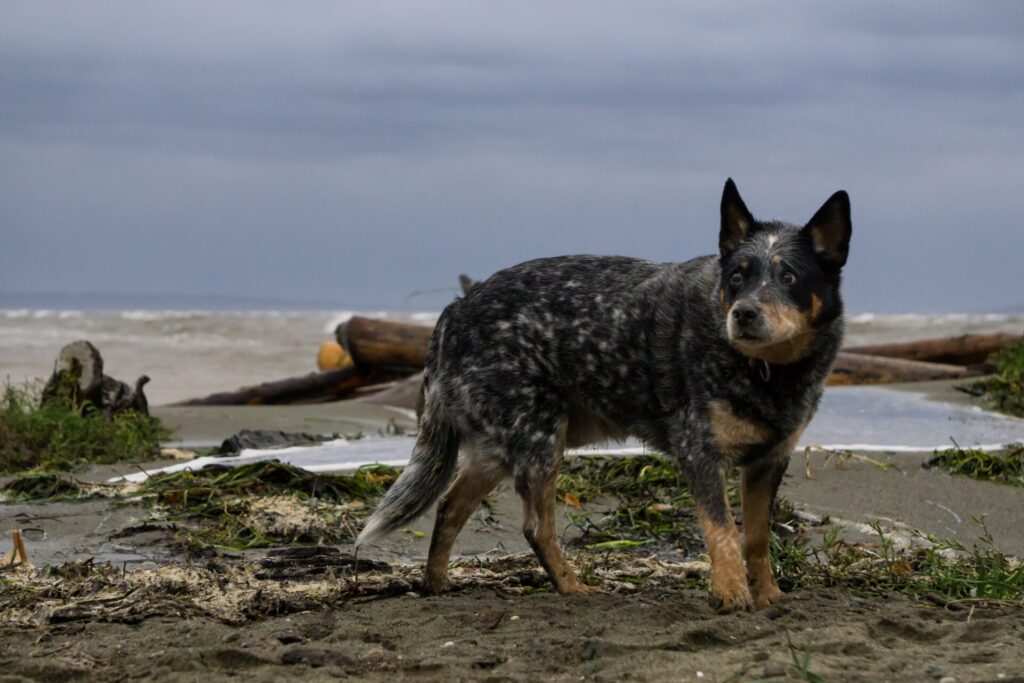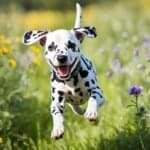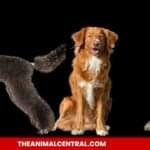Introduction to the Australian Cattle Dog
The Australian Cattle Dog, also known as the Blue Heeler or Queensland Heeler, is a highly versatile and intelligent dog breed that originated in Australia. These dogs were initially bred for herding cattle in harsh and remote Australian landscapes. They are known for their remarkable endurance, agility, and loyalty. Australian Cattle Dogs are now popular pets in many parts of the world, thanks to their unique temperament and intelligence.
Australian Cattle Dog: Breed Overview
| Attribute | Response |
| Origin | Australia |
| History | Bred for herding cattle on ranches in the 19th century |
| Affectionate with Family | Yes, but may have a strong herding instinct towards children |
| Good with Children | Can be good with children if socialized properly |
| Good with Other Dogs | Can be socialized to get along with other dogs |
| Ideal Family | Active and experienced with high-energy breeds |
| Space Requirements | Needs plenty of space and exercise |
| Shedding Level | Moderate shedding throughout the year |
| Coat Grooming Frequency | Weekly brushing and occasional baths |
| Coat Type | Double coat with a dense undercoat and smooth outer coat |
| Coat Length | Short to medium |
| Drooling Level | Low |
| Openness to Strangers | May be wary of strangers and require proper socialization |
| Playfulness | High |
| Watch/Guard Dog | Can make a good guard dog, but may be wary of strangers |
| Trainability | Highly trainable with consistent, positive reinforcement |
| Energy Level | High |
| Barking Level | Moderate to high, may bark excessively if not properly trained |
| Mental Stimulation Needs | Requires plenty of mental stimulation in addition to exercise |
| Dietary Requirements | High-quality dog food to support their active lifestyle |

History and Origin of the Australian Cattle Dog
The Australian Cattle Dog was developed in the early 19th century in Australia by a cattle rancher named Thomas Hall. He needed a dog breed that could work effectively in the challenging and unforgiving conditions of the Australian outback. Hall crossed various dog breeds, including the Dingo, Kelpie, and Collie, to create a breed that would meet his requirements. The result was the Australian Cattle Dog, which soon became popular among ranchers and farmers.
Physical Characteristics and Temperament of the Australian Cattle Dog
Australian Cattle Dogs are medium-sized dogs that weigh between 30 to 50 pounds and stand around 17 to 20 inches tall. They have a short and dense coat that comes in two colors, blue and red. These dogs are known for their muscular build, agility, and alertness. They have a unique appearance, with their mottled coat and erect ears.
The temperament of the Australian Cattle Dog is often described as loyal, energetic, and intelligent. These dogs are highly trainable and excel in various tasks, such as obedience training, herding, and agility training. They are known for their protective nature towards their owners and their families.
Training and Exercise for Australian Cattle Dogs
Australian Cattle Dogs require consistent and structured training to become well-behaved pets. These dogs have a high energy level, and they need regular exercise and stimulation to keep them mentally and physically fit. Owners must provide their dogs with plenty of playtime, walks, and runs to keep them happy and healthy.
Training Australian Cattle Dogs requires patience and consistency. These dogs respond well to positive reinforcement training methods, such as rewards-based training. Early socialization is also essential for these dogs to develop good behavior and obedience skills.
Feeding and Grooming Australian Cattle Dogs
Australian Cattle Dogs require a high-quality and balanced diet to maintain their health and energy levels. Owners must provide their dogs with a diet rich in protein, carbohydrates, and essential nutrients. It is crucial to monitor the dog’s weight and adjust their diet accordingly to prevent obesity.
Grooming Australian Cattle Dogs is relatively easy due to their short and dense coat. Owners must brush their dogs’ coats regularly to remove any loose hair and dirt. It is also important to maintain good dental hygiene and trim their nails regularly.
Health Issues and Life Expectancy of Australian Cattle Dogs
Australian Cattle Dogs are generally healthy dogs with a lifespan of 12-16 years. However, like all breeds, they are prone to certain health concerns that owners should be aware of. These include:
- Hip Dysplasia: A condition where the hip joint does not develop properly, leading to arthritis and pain.
- Progressive Retinal Atrophy: A degenerative eye disease that can lead to blindness.
- Deafness: Australian Cattle Dogs are prone to congenital deafness, which is a genetic condition.
- Osteochondritis Dissecans: A joint disease that affects the shoulder, elbow, or knee joints and can cause lameness and pain.
- Allergies: Australian Cattle Dogs can develop allergies to food, environmental factors, or fleas.
Regular visits to the vet and proper care can help prevent or manage these health concerns. It is also essential to purchase an Australian Cattle Dog from a reputable breeder who tests for these health issues.
Common Misconceptions About Australian Cattle Dogs
There are several misconceptions about Australian Cattle Dogs that many people believe. One of the most common misconceptions is that these dogs are aggressive and difficult to handle. While Australian Cattle Dogs have a protective nature, they are not naturally aggressive. Proper training and socialization can help prevent aggressive behavior.
Another common misconception is that these dogs require a lot of space and are not suitable for apartment living. While Australian Cattle Dogs do have a high energy level and need regular exercise, they can adapt to apartment living if they get enough exercise and stimulation. They also enjoy spending time with their owners, so they thrive in households where they can be part of the family.
Benefits and Challenges of Owning an Australian Cattle Dog
Benefits:
- Loyalty and affection: Australian Cattle Dogs are loyal and affectionate to their owners.
- Intelligence: They are highly intelligent and trainable, making them good candidates for obedience and agility training.
- Active lifestyle: They require plenty of exercise, making them great companions for active owners who enjoy outdoor activities like hiking and running.
- Low maintenance: They have short hair and require minimal grooming.
- Protection: They are protective of their family and can make good guard dogs.
Challenges:
- High energy level: They require a lot of exercise and mental stimulation, which can be challenging for busy owners or those with limited space.
- Strong herding instinct: They may try to herd children or other animals, which can be problematic if not properly trained and socialized.
- Destructive behavior: Without enough exercise and mental stimulation, they may become bored and resort to destructive behavior.
- Separation anxiety: They can become anxious and destructive when left alone for long periods of time.
- Stubbornness: They can be stubborn and difficult to train if not approached with patience and positive reinforcement.
Overall, owning an Australian Cattle Dog can be a rewarding experience for the right owner who is willing to commit to their high energy needs and strong instinctual behaviors. However, it is important to be aware of the challenges and to provide proper training and socialization to ensure a happy and healthy relationship with your dog.
Australian Cattle Dogs in Different Roles
Australian Cattle Dogs are versatile dogs that can excel in various roles. They are commonly used for herding, but they can also be trained for other tasks, such as search and rescue, therapy, and even law enforcement. Australian Cattle Dogs have a keen sense of smell and are highly trainable, making them suitable for different types of work.
Famous Australian Cattle Dogs
Several famous Australian Cattle Dogs have gained fame over the years. One of the most famous is Bluey, who lived for 29 years and is recognized as the world’s oldest dog. Other famous Australian Cattle Dogs include Red Dog, the subject of a popular book and movie, and Blue, the first Australian Cattle Dog to win a Best in Show title at the Westminster Kennel Club Dog Show.
Conclusion
Australian Cattle Dogs are a unique and intelligent breed that can make excellent pets for the right owners. They require plenty of exercise, training, and socialization, but the effort is worth it for the loyalty and companionship they provide. It is essential to understand their temperament and needs before bringing one home to ensure a happy and healthy relationship.
FAQs
How much exercise do Australian Cattle Dogs need?
Australian Cattle Dogs are high-energy dogs that require at least an hour of exercise each day, preferably in the form of brisk walks or runs.
Do Australian Cattle Dogs shed a lot?
Yes, Australian Cattle Dogs shed moderately throughout the year and heavily during shedding season. Regular brushing can help manage their shedding.
Are Australian Cattle Dogs easy to train?
Australian Cattle Dogs are highly trainable, but they can be stubborn and independent. Consistent, positive reinforcement training methods work best with this breed.
How much do Australian Cattle Dogs typically cost?
The price of an Australian Cattle Dog can vary depending on the breeder and location, but they generally cost between $500 to $1,500.
Do Australian Cattle Dogs have a strong prey drive?
Yes, Australian Cattle Dogs have a strong prey drive and may try to chase and kill small animals such as cats or squirrels. Early socialization and training can help manage this behavior.
Are Australian Cattle Dogs good with children?
Australian Cattle Dogs can be good with children if socialized properly from a young age. However, they may nip or herd children due to their instinctive herding behavior.
Do Australian Cattle Dogs have any health issues?
Australian Cattle Dogs are generally healthy, but they may be prone to certain health issues such as hip dysplasia, deafness, and eye problems. Regular checkups with a veterinarian can help catch and manage any health issues early.
Can Australian Cattle Dogs live in apartments?
Australian Cattle Dogs are high-energy dogs that require plenty of exercise, so they may not be suitable for apartment living. However, if given enough exercise and mental stimulation, they can adapt to living in smaller spaces.
How long do Australian Cattle Dogs live?
The average lifespan of an Australian Cattle Dog is 12 to 16 years.
Are Australian Cattle Dogs good guard dogs?
Australian Cattle Dogs are protective of their family and can make good guard dogs. However, they may be wary of strangers and require proper socialization to prevent aggression towards unfamiliar people or animals.
References
- The Australian National Kennel Council (ANKC) – the governing body for purebred dog breeding and exhibiting in Australia. https://ankc.org.au/
- The American Kennel Club (AKC) – a non-profit organization dedicated to promoting the health and well-being of purebred dogs. https://www.akc.org/
- The United Kennel Club (UKC) – a international dog registry that promotes and registers purebred dogs. https://www.ukcdogs.com/
- The Fédération Cynologique Internationale (FCI) – an international federation of kennel clubs that sets breed standards and regulations for purebred dogs. https://www.fci.be/
- The Working Dog Alliance Australia (WDAA) – an organization dedicated to the preservation and promotion of working dogs in Australia, including Australian Cattle Dogs. https://workingdogalliance.com.au/
Please also check other articles in this website like
The Essential Guide to Newfoundland Dogs 2023
A Comprehensive Guide to the Most Popular Hunting Dog Breeds
A Comprehensive Guide to the Dogo Argentino – Everything You Need to Know
Thanks.
-
Calico Cats: Unique Feline Companions
Discover the charm of calico cats in my ultimate guide, covering their history, characteristics, and care tips for these unique felines.
-
Osprey vs Bald Eagle: The Dramatic Sky Battles for Fish
I’ve observed Osprey vs Bald Eagle engaging in fierce sky battles for fish, a captivating comparison that sheds light on their hunting tactics.
-
Why Are Zebra Stripes Black and White? The Fascinating Answers Unveiled
I delve into the science behind zebra stripes and answer ‘Why Are Zebra Stripes Black and White?’ revealing intriguing reasons and surprising facts.











[…] Australian Cattle Dogs: A Comprehensive Guide 2023 […]
[…] Australian Cattle Dogs: A Comprehensive Guide 2023 […]
[…] Australian Cattle Dogs: A Comprehensive Guide 2023 […]
[…] information about the breed. Rottweilers are not inherently aggressive, and aggression in any dog breed is more likely the result of improper handling, neglect, or […]